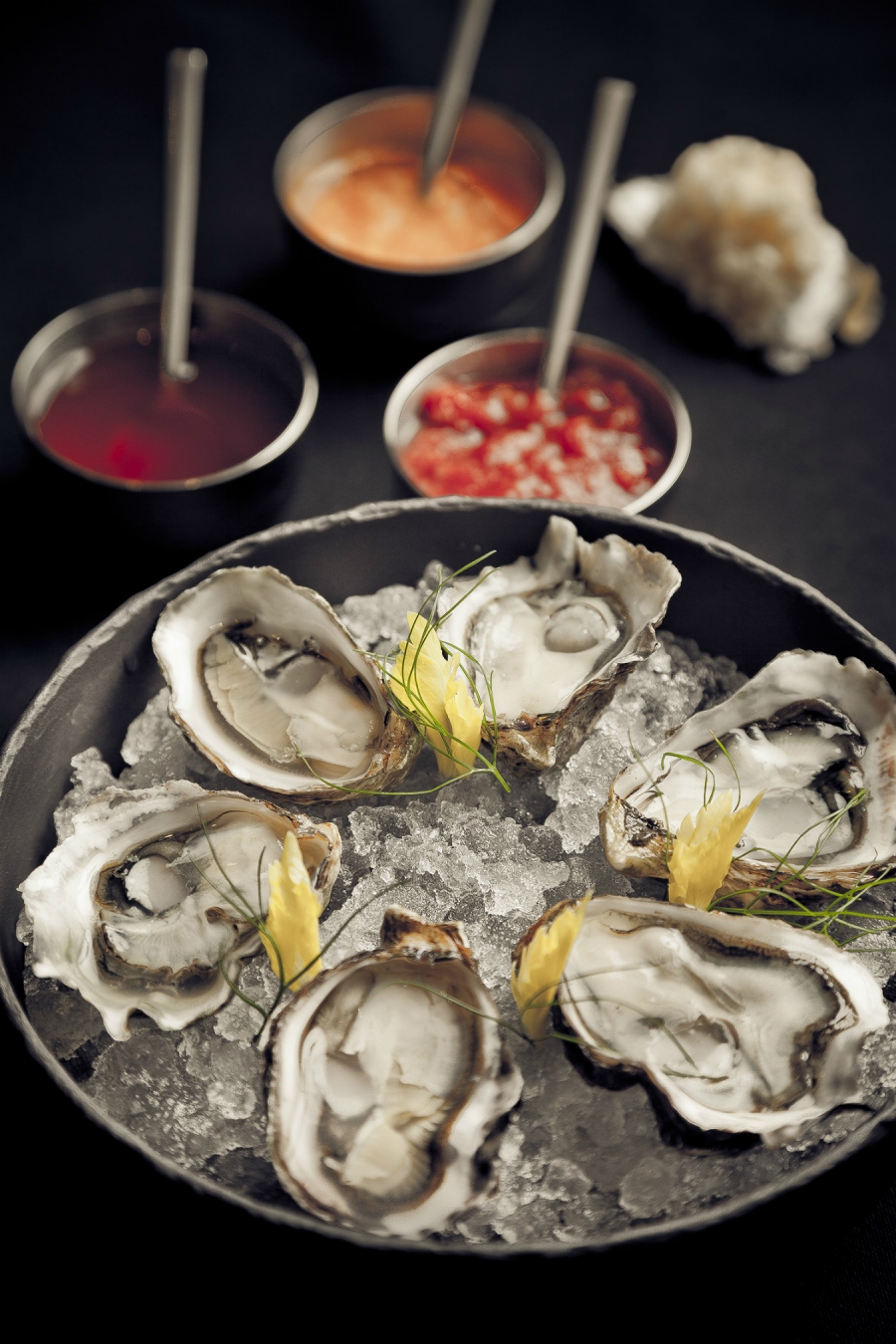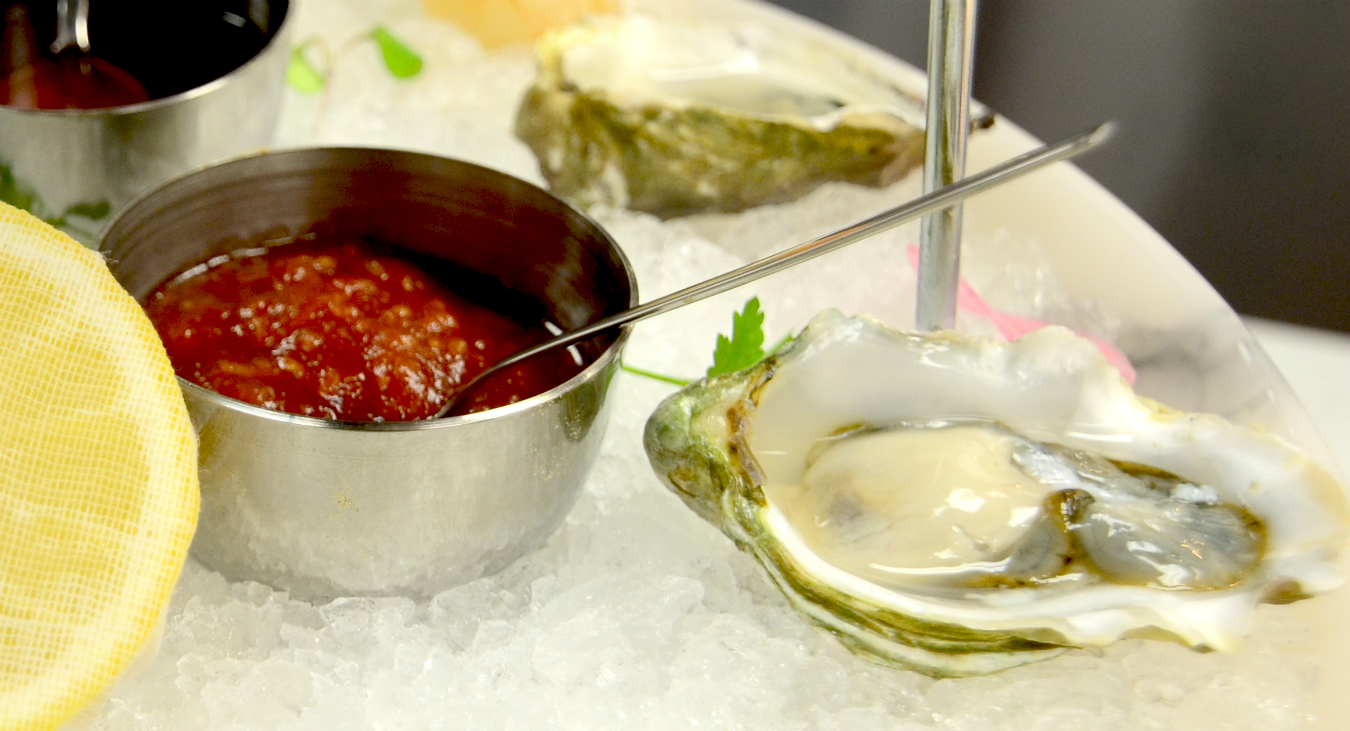His restaurant whites have him simply as “Oyster Bob”, and after over 30 years separating bivalve shells to reveal the precious meat encased therein, it makes sense. Bob Skinner has seen the advent of oyster consumption, pristine oyster cultivation, and a general, almost unslakeable thirst for both the tasty nectar and the oysters themselves, a radical change from the early days when only a few varieties were known by consumers. If you ordered local oysters 30 years ago, they would come from one of many farmers who would sell to the suppliers, but now we see farmers bring their product directly to the restaurant. The difference today is that restaurants are interacting with suppliers to provide feedback on their products, and are telling them which particular traits they’d like to see. It is something Skinner has been at the forefront of over the years. You can call him an oyster advocate.
High juice content “tray” (cultivated) oysters, raised in cooler waters, mean consumers can access a wide range of styles and sizes, and experience fresh, clean-finishing morsels. Oysters can be eaten year round, but some must be cooked. In the summer, a lot of areas do get closed due to red tide and bacteria counts being too high, so oysters will be farmed from cold water. All of the oysters served by Skinner are federally inspected and tested. He introduced oysters to countless guests at Joe Fortes over the years, and now helms the fabulous oyster bar at Boulevard Kitchen & Oyster Bar.
Skinner uses only a neat, tight wrap of hockey tape on his left thumb to protect himself, and even that is not to shield from the knife, but rather to facilitate running his thumb along the potentially jagged edges of the oyster to pop the flat bottom off, after the hinge, at 6 o’clock, has been cracked, and the abductor muscle (“at 3 o’clock, every oyster, every time”) is severed. His technique is advanced to the point where he is beginning to work on another oyster while he is still placing the previous one, opened and ready to eat, on a plate. This technique has won him two shucking world championships, and the trophy itself does not pale at all in comparison to, say, the Stanley Cup. “It’s really a beautiful trophy,” says Skinner, who has come in second or third several times, in addition to his two wins. “I’m a firm believer in shucking competitions, it really gives you a great measuring stick, and forces you to be fast, efficient, and above all, clean, so you present a good-looking plate.” We are talking about shucking a dozen oysters in a minute, give or take a second or two, no mean feat.
Skinner actually custom-sharpens the tip and top edges of his knives “so I can get into the hinge quickly, and easily. You don’t want to wrestle with them, or crack and break the shells.” A master shucker also knows how to keep the tasty liquid safely in the bottom “cup” of the shell; it is a vital component in the overall flavour of the oyster.
Skinner’s passion for his work is abundantly evident as he discusses techniques, and even more so when simply talking about oysters a part of a dining experience. “I eat oysters everywhere I go, without exception. Have had some great experiences.” He pauses, has a broad smile on his face, and adds, “but it is sure hard to beat what we have going on right here at home.”
Oysters 101:
Oysters can be eaten all year round.
Oysters with firm meat are better suited to be cooked.
The nectar, or liquor, in the shell is vital to great taste.
Match with beverages according to your own taste. Skinner prefers, in order, Sancerre, beer, Champagne.
East coast oysters do taste different than west coast oysters; they have a slightly higher saline content as well.
As with other knives in your kitchen, having a proper oyster knife is essential. Most oyster knifes have a dull, fat tip and the hinge is quite small, so Skinner grinds his down so it has a finer edge to sever the abductor muscle so the oyster slides nicely off the shell.
Shucking oysters while drinking that third glass of wine is a bad idea.












